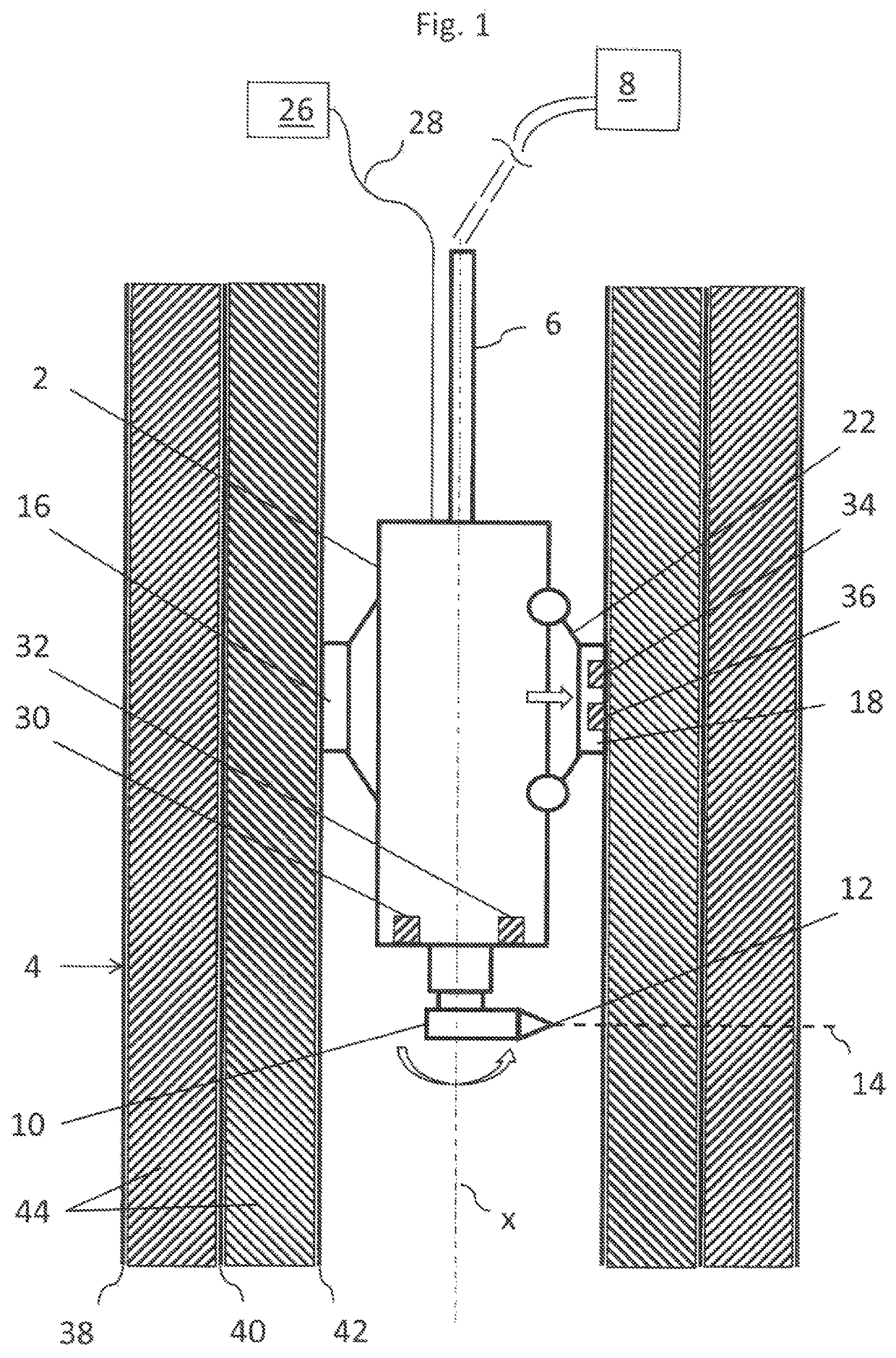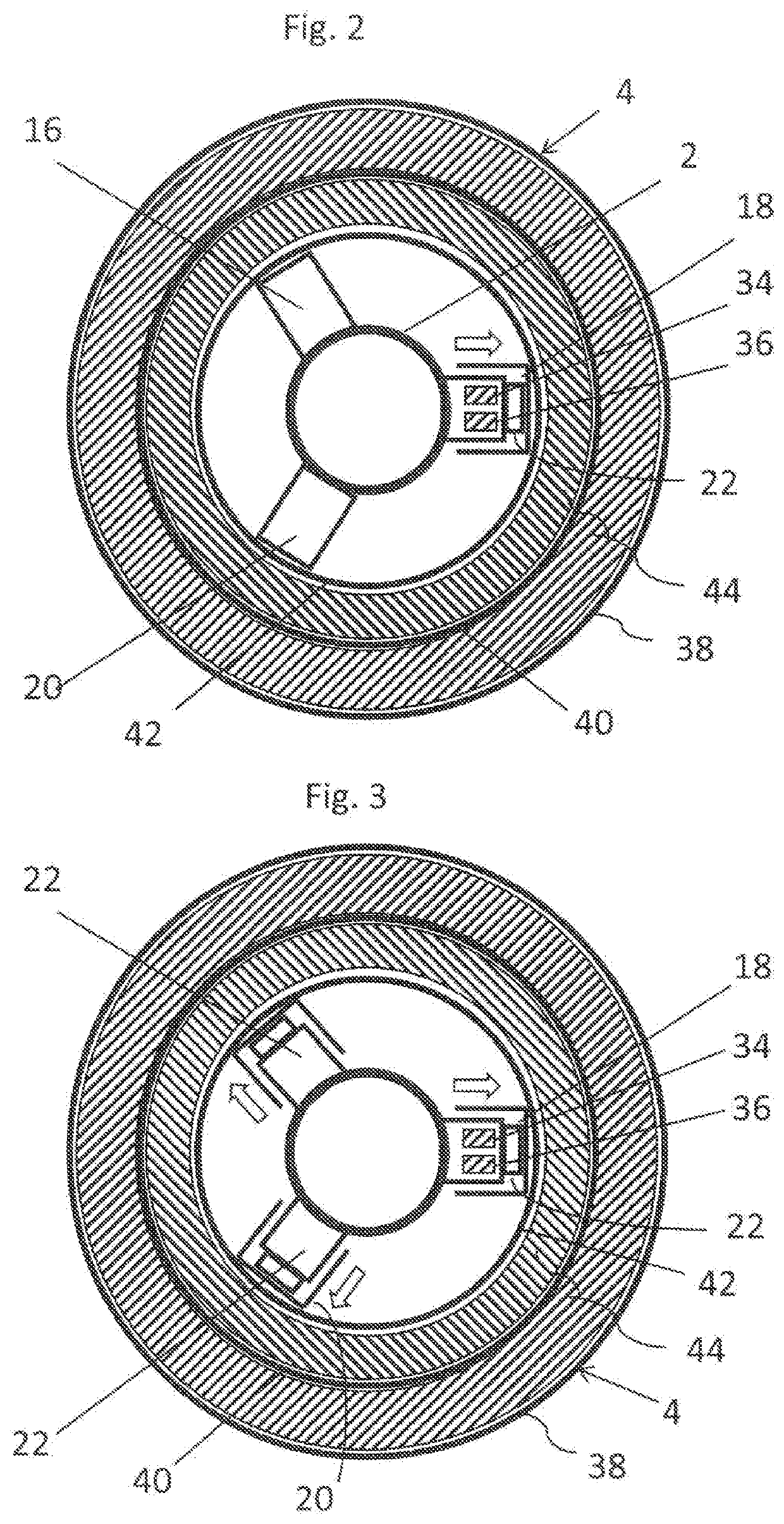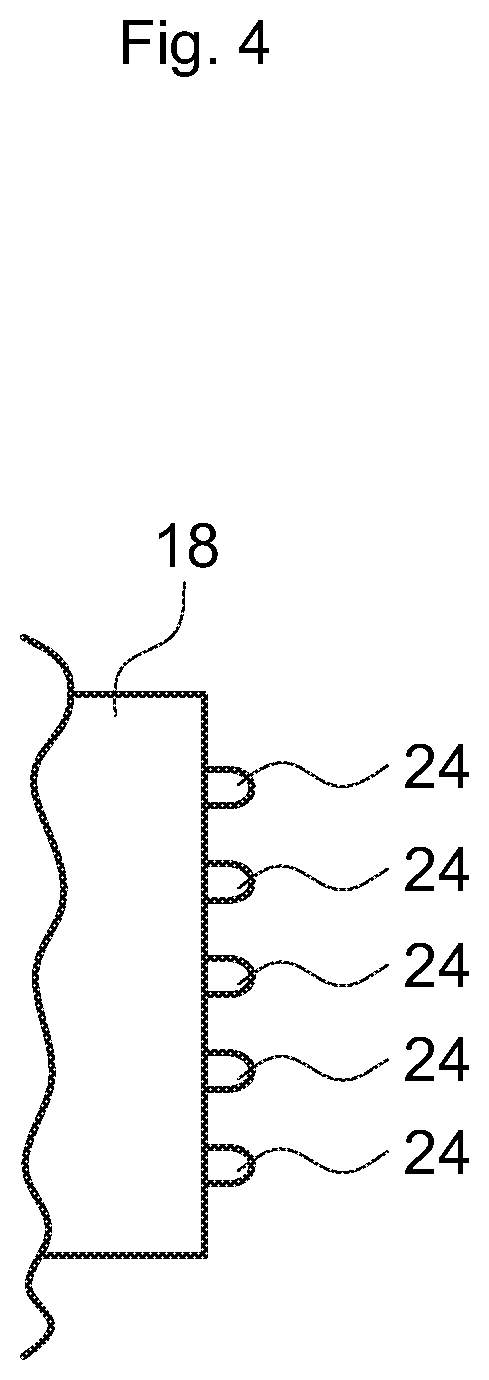Water-abrasive cutting system
a cutting system and water-abrasive technology, applied in the direction of abrasive machine components, earth drilling and mining, abrasive apparatus, etc., can solve the problems of difficult detection, difficult to detect, difficult to carry out work, etc., and achieve the effect of small stroke length of the movable contact element and positive engagemen
- Summary
- Abstract
- Description
- Claims
- Application Information
AI Technical Summary
Benefits of technology
Problems solved by technology
Method used
Image
Examples
Embodiment Construction
[0033]Referring to the drawings, the shown water-abrasive cutting system is a water-abrasive suspension cutting system, that is a cutting system in which the abrasive agent is added to the water in the high-pressure region upstream of a cutting nozzle. The cutting system according to the invention comprises a cutting head 2 which is configured for insertion into a pipe 4. The cutting head 2 is connected via a pressure line 6 to a supply unit 8. The supply unit 8 comprises in particular a high-pressure pump which provides water at high pressure, for example, a pressure of 2500 bar or higher. Furthermore the supply unit 8 has an abrasive agent supply. The suspension at high pressure, that is a water-abrasive agent mixture, is supplied via the pressure line 6 to the cutting head 2. During operation the supply unit 8 remains outside the pipe. In offshore applications the supply unit 8 preferably remains above the water surface whilst the cutting head 2, for example, is introduced so far...
PUM
| Property | Measurement | Unit |
|---|---|---|
| pressure | aaaaa | aaaaa |
| rotation | aaaaa | aaaaa |
| circumference | aaaaa | aaaaa |
Abstract
Description
Claims
Application Information
 Login to View More
Login to View More - R&D
- Intellectual Property
- Life Sciences
- Materials
- Tech Scout
- Unparalleled Data Quality
- Higher Quality Content
- 60% Fewer Hallucinations
Browse by: Latest US Patents, China's latest patents, Technical Efficacy Thesaurus, Application Domain, Technology Topic, Popular Technical Reports.
© 2025 PatSnap. All rights reserved.Legal|Privacy policy|Modern Slavery Act Transparency Statement|Sitemap|About US| Contact US: help@patsnap.com



